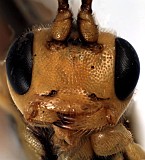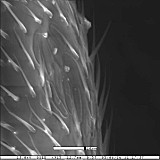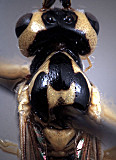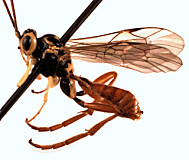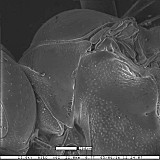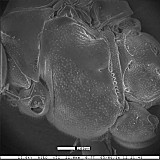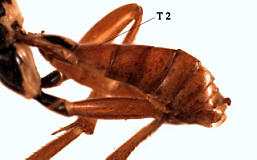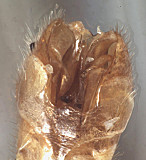Physotarsus cordatus Zhaurova, 2009
Physotarsus cordatus is one of several species with a black and yellow mesosoma and a distinctly punctate mesopleuron. It differs from nearly all of these by the absence of dark brown to black markings on T2-6, which are uniformly orange in P. cordatus. Physotarsus truncatus Zhaurova is nearly identical but is darker, most notably on the mesoscutum which lacks the yellowish notaular lines of P. cordatus.
There are no specimens currently determined for this OTU, or those specimens determined for this OTU are not yet mappable.
This material is based upon work supported by the National Science Foundation under Grant Number DEB 0328922 with REU supplement DEB 0723663.
Any opinions, findings, and conclusions or recommendations expressed in this material are those of the author(s) and do not necessarily reflect the views of the National Science Foundation.

